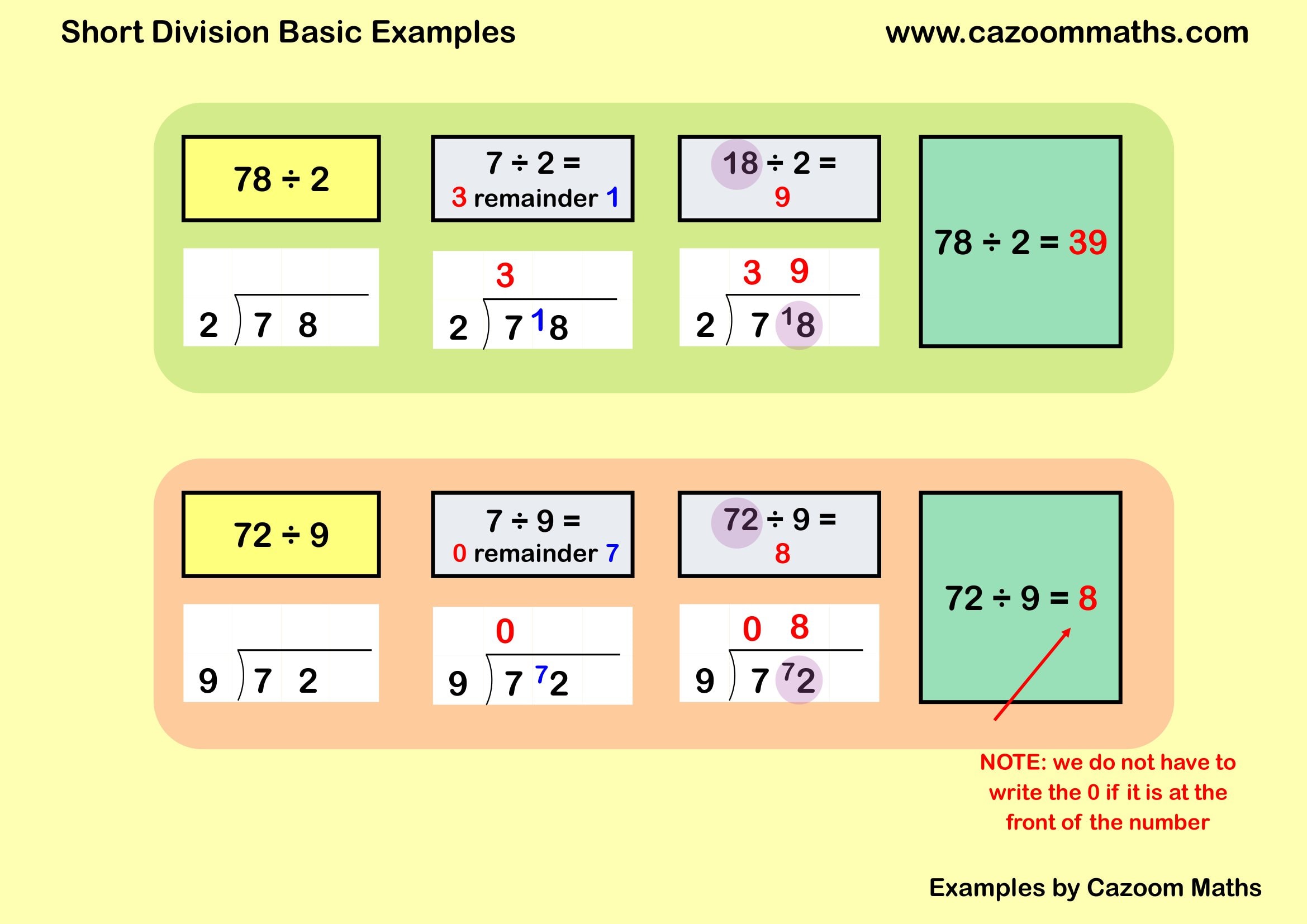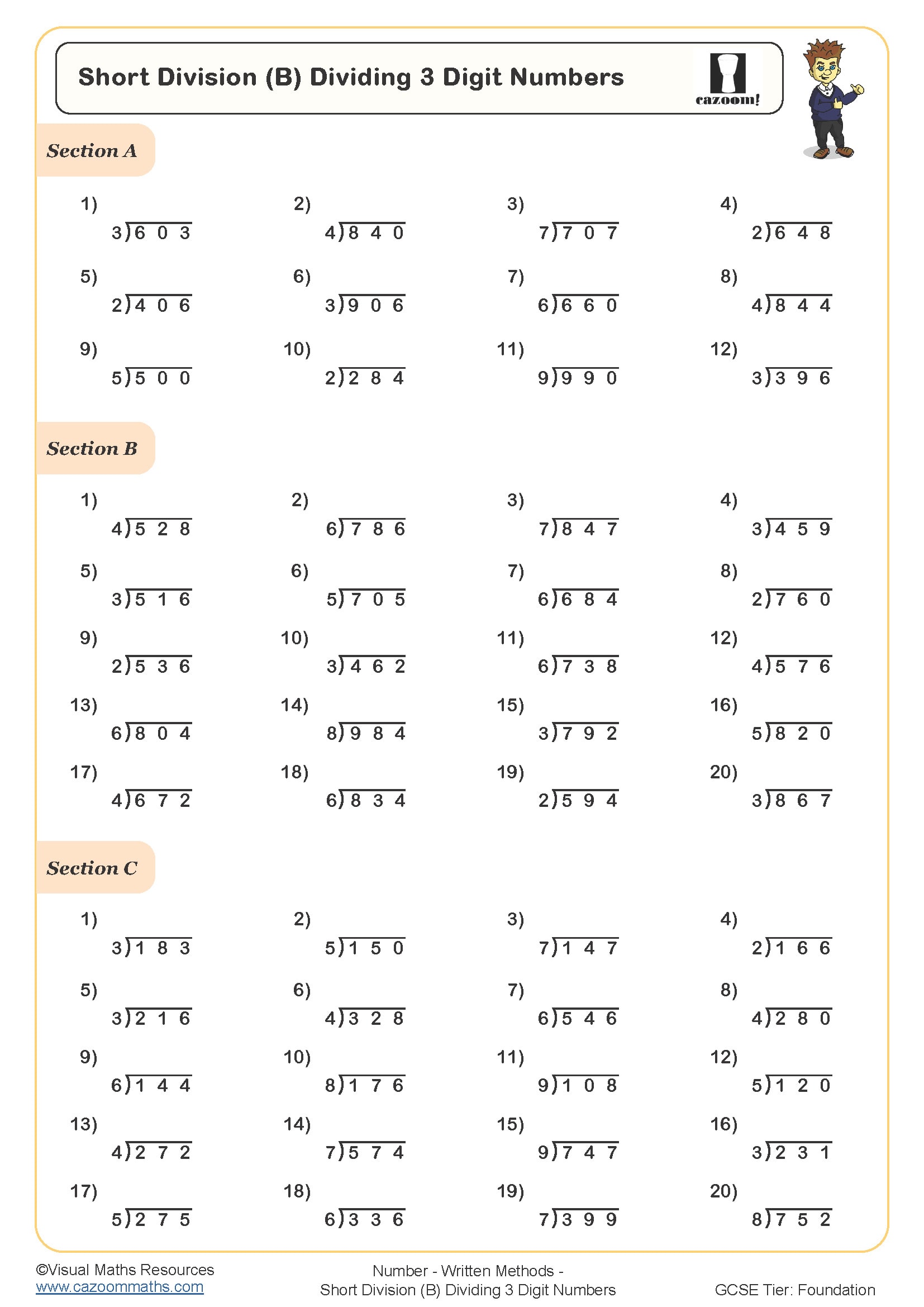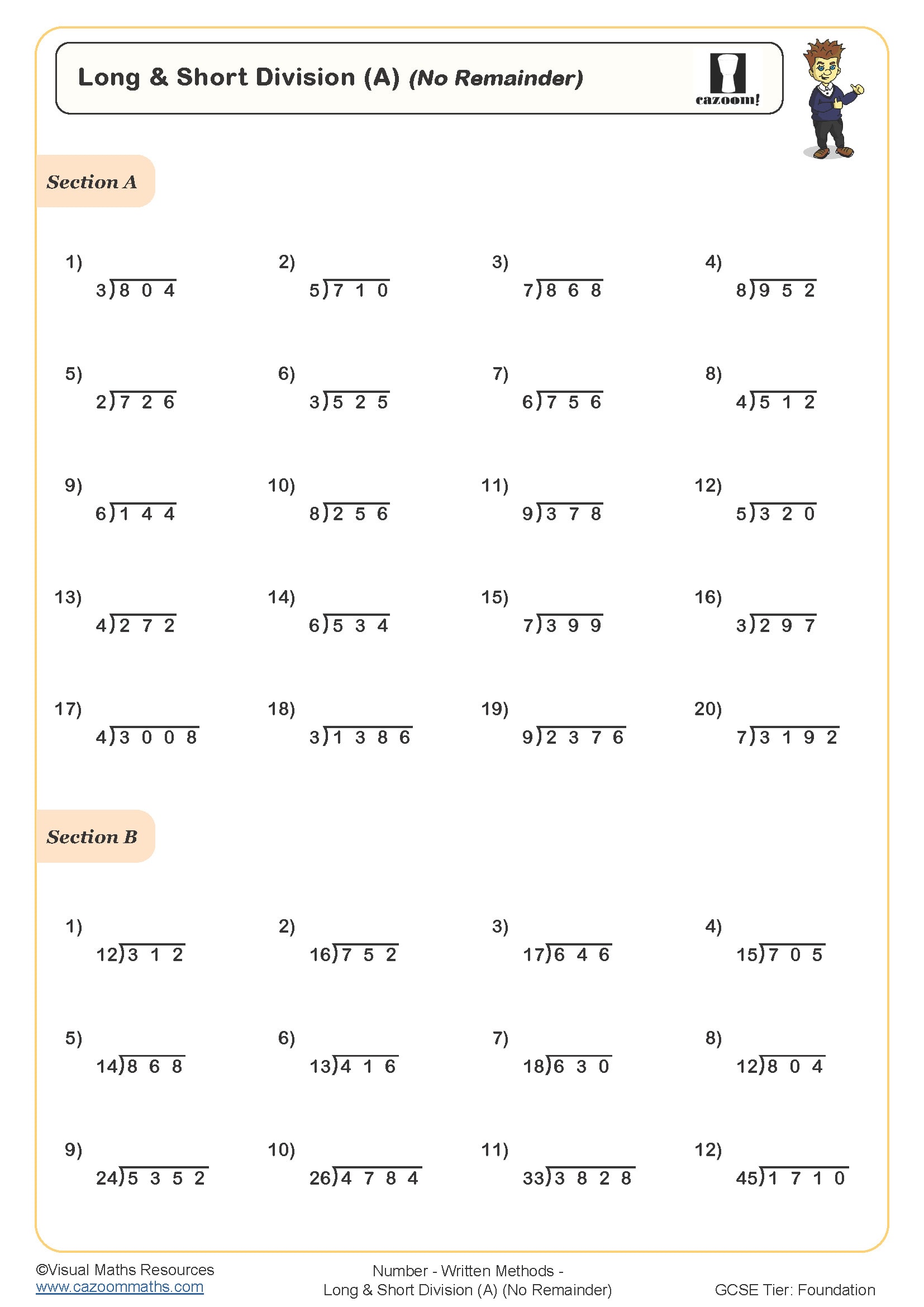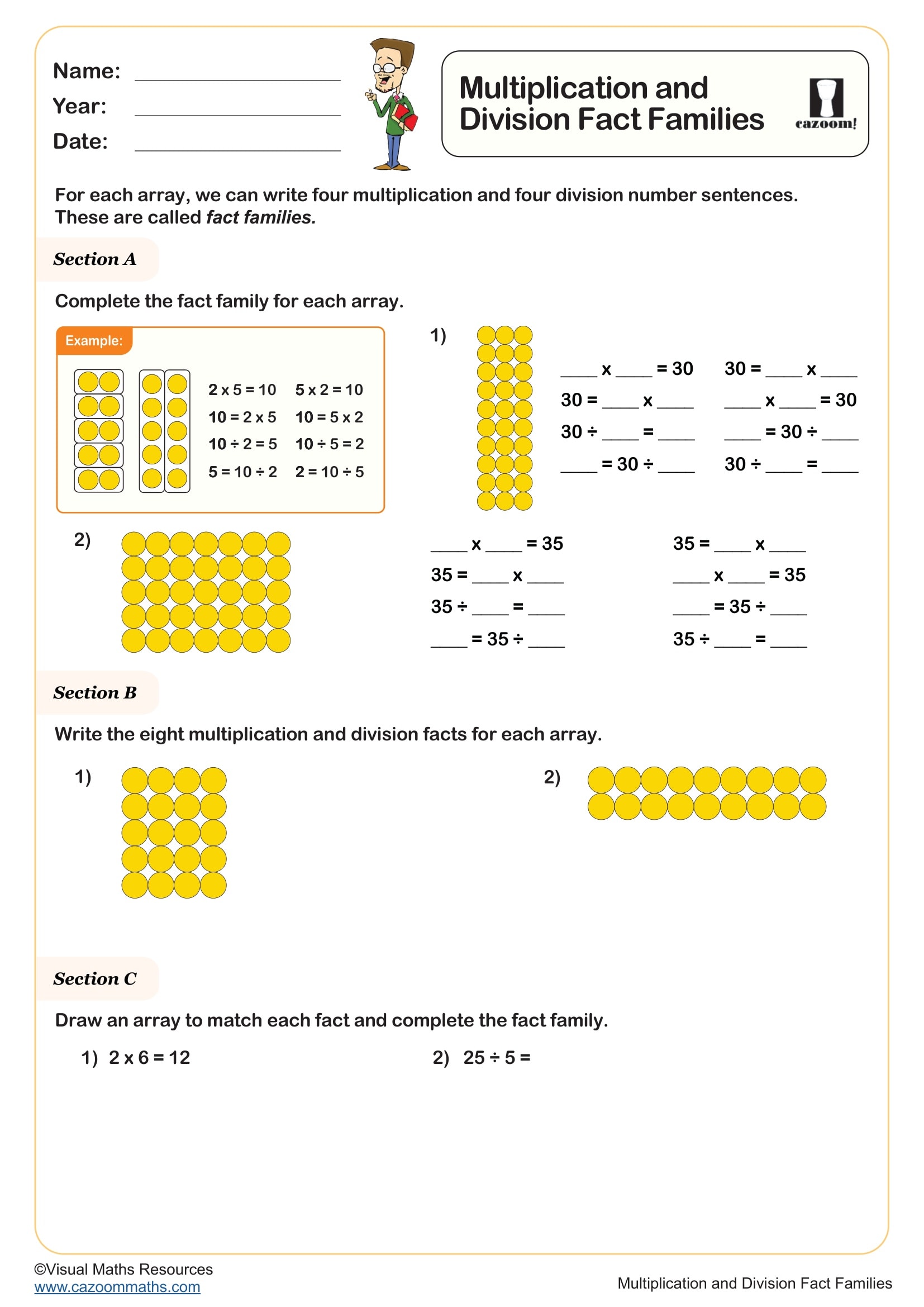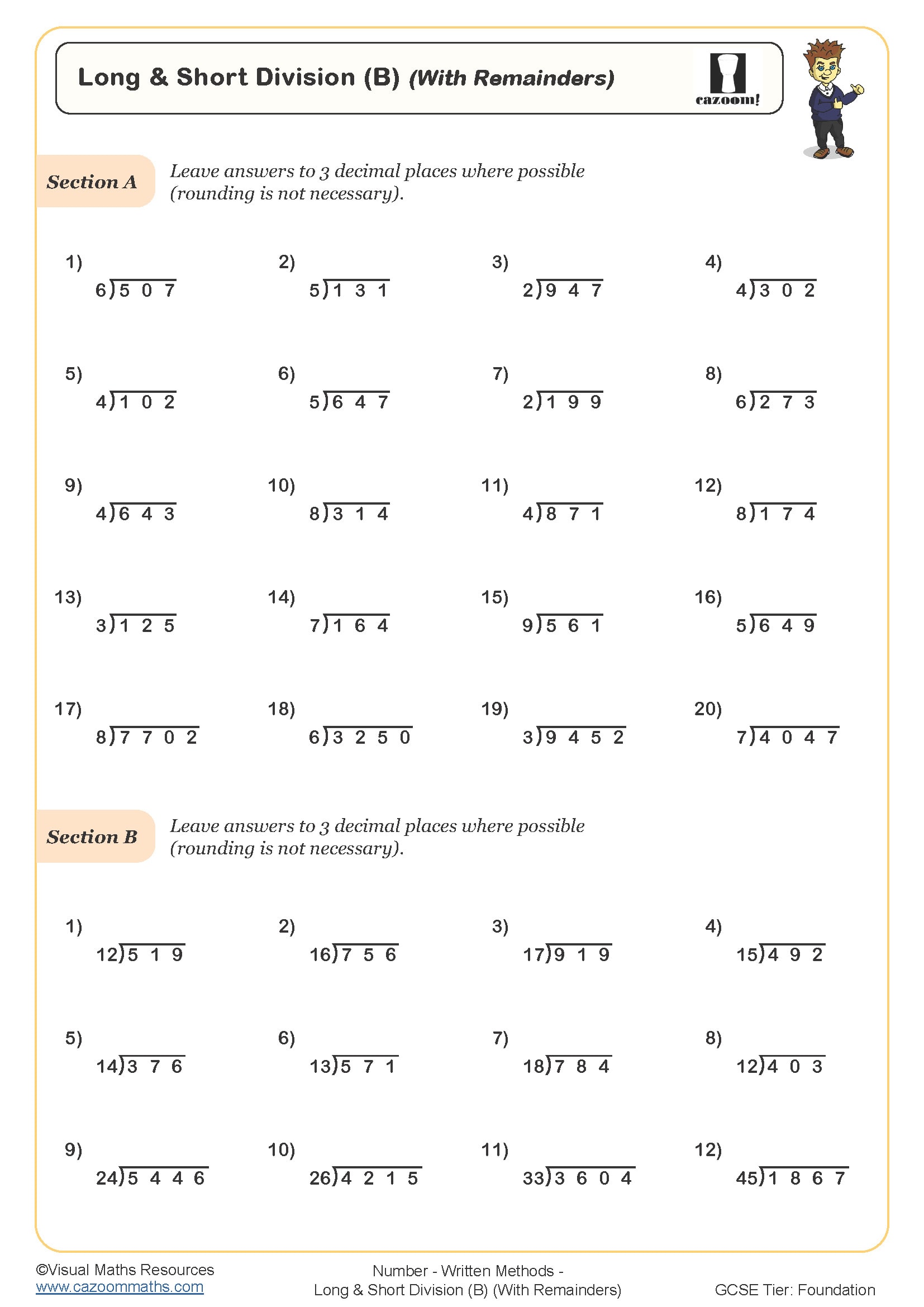Short Division Basic RESOURCE (FREE DOWNLOAD)
Short Division Basic RESOURCE DESCRIPTION
Short Division Method: How to Do Short Division with Examples
Short division is a basic number maths skill for the KS3 and KS4 curriculum. This is a simple method for dividing large numbers easily and quickly. It is a simplified and more efficient version of long division. This process is especially useful when dividing numbers without a calculator.
Our teaching resource will explain how to do short division with easy-to-understand step-by-step examples.
What is Short Division?
We can use the short division method as a quick way to divide numbers by single-digit or small two-digit divisors. This process involves writing the division in a compact form while keeping track of remainders. Gaining a solid understanding of this process helps students master basic division skills.
How to Do Short Division: Step-by-Step Guide
Here are two worked examples showing the bus stop method in action:
Example 1: \(78 \div 2\)
- Set up the division using the bus stop method:
___2 | 78
- Divide the first digit (7) by 2:
2 goes into 7 three times (3), remainder 1.
Write 3 above the 7 and carry the remainder 1 to the next digit.
- Divide the next part (18) by 2:
2 goes into 18 exactly 9 times.
Write 9 above the 8.
Final answer: \(78 \div 2 = 39\)
---
Example 2: \(72 \div 9\)
- Set up the division:
___9 | 72
- Divide the first digit (7) by 9:
9 doesn’t go into 7 (0 times), so carry the 7 over to the next digit (72).
- Divide 72 by 9:
9 goes into 72 exactly 8 times.
Write 8 above the 2.
Final answer: \(72 \div 9 = 8\)
---
Why Use the Short Division Method?
- It's faster than long division for simple calculations.
- It improves mental maths fluency.
- It helps divide large numbers accurately without a calculator.
Common Mistakes in Short Division
Here are some common mistakes students should watch out for:
- Forgetting to carry remainders: Always move the remainder to the next digit.
- Incorrect alignment: Ensure digits are written in the correct place value column.
